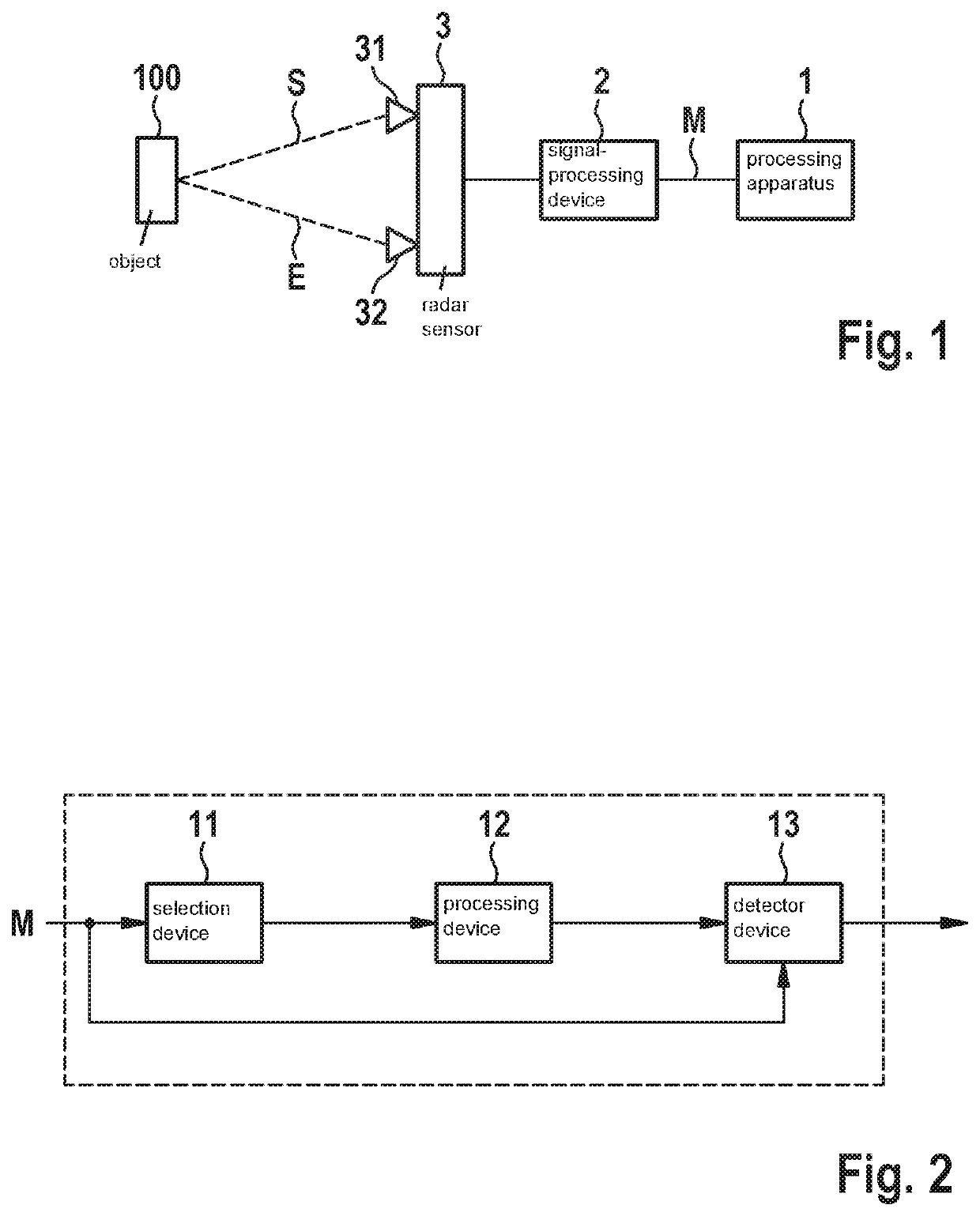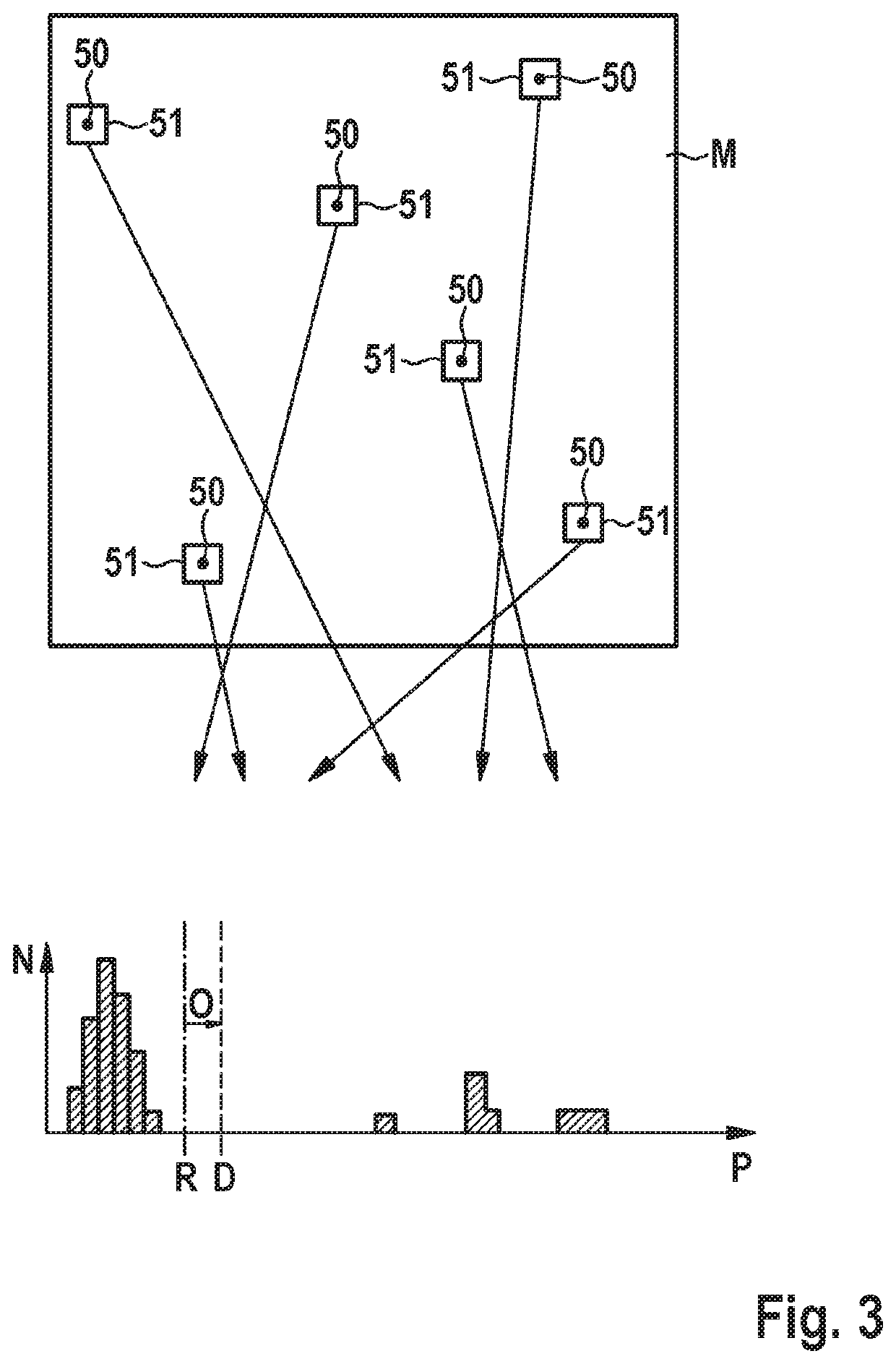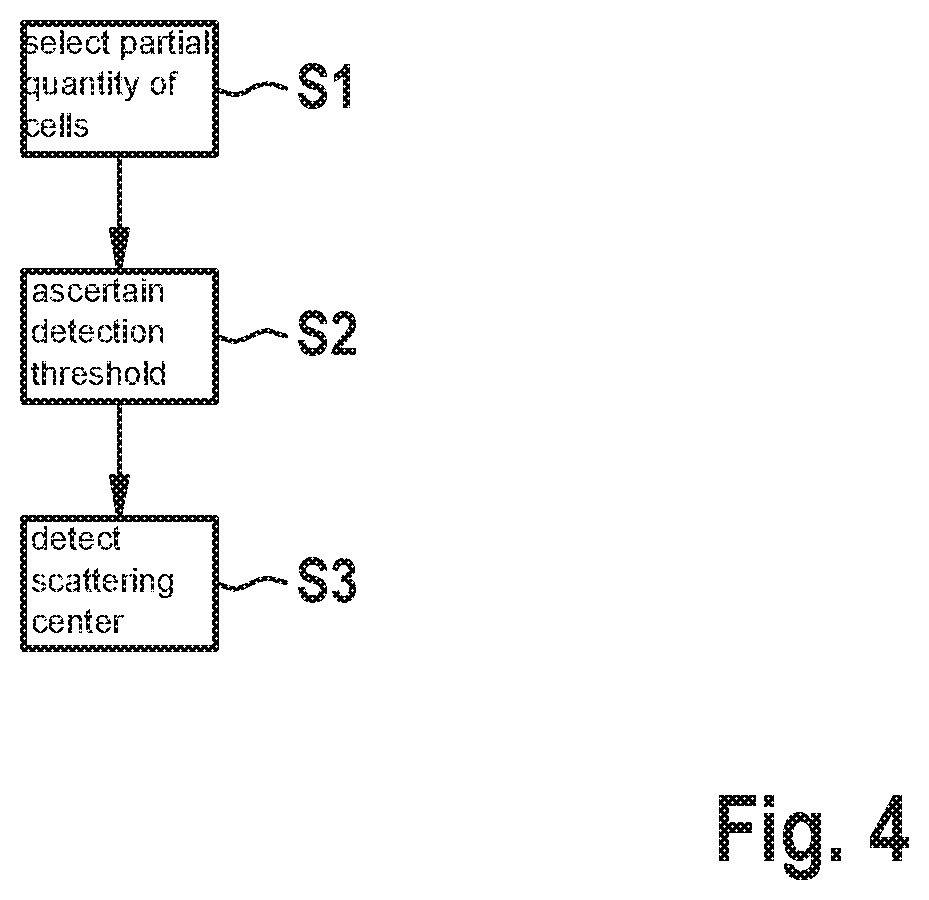Method and apparatus for processing a range-doppler matrix and radar system
a rangedoppler matrix and radar system technology, applied in the field of rangedoppler matrix processing and radar system, can solve the problem of high computational expenditure for complete analysis of the values of all cells, and achieve the effect of reducing reducing the required computing power, and reducing the computational expenditure for ascertaining the detection threshold
- Summary
- Abstract
- Description
- Claims
- Application Information
AI Technical Summary
Benefits of technology
Problems solved by technology
Method used
Image
Examples
Embodiment Construction
[0037]FIG. 1 shows a schematic representation of a block diagram of a radar system having an apparatus 1 for processing a range-Doppler matrix according to one specific embodiment. For example, the radar system may include a radar sensor 3 which emits radar signals S with the aid of a transmitting antenna 31. Emitted radar signals S may be reflected or scattered partially by an object 100. A portion of the reflected radar signals may be received as receive signal E by a receiving antenna 32 of radar sensor 3. The conditioned receive signals may be processed by a signal-processing device 2 of the radar system. In particular, signal-processing device 2 is able to generate a range-Doppler matrix M. In this context, the function of radar sensor 3 as well as the generating of range-Doppler matrix M may be carried out in any, e.g., conventional manner, and are therefore not explained in greater detail here.
[0038]Depending on the resolution, range-Doppler matrix M may have a few hundred th...
PUM
 Login to View More
Login to View More Abstract
Description
Claims
Application Information
 Login to View More
Login to View More - R&D
- Intellectual Property
- Life Sciences
- Materials
- Tech Scout
- Unparalleled Data Quality
- Higher Quality Content
- 60% Fewer Hallucinations
Browse by: Latest US Patents, China's latest patents, Technical Efficacy Thesaurus, Application Domain, Technology Topic, Popular Technical Reports.
© 2025 PatSnap. All rights reserved.Legal|Privacy policy|Modern Slavery Act Transparency Statement|Sitemap|About US| Contact US: help@patsnap.com



